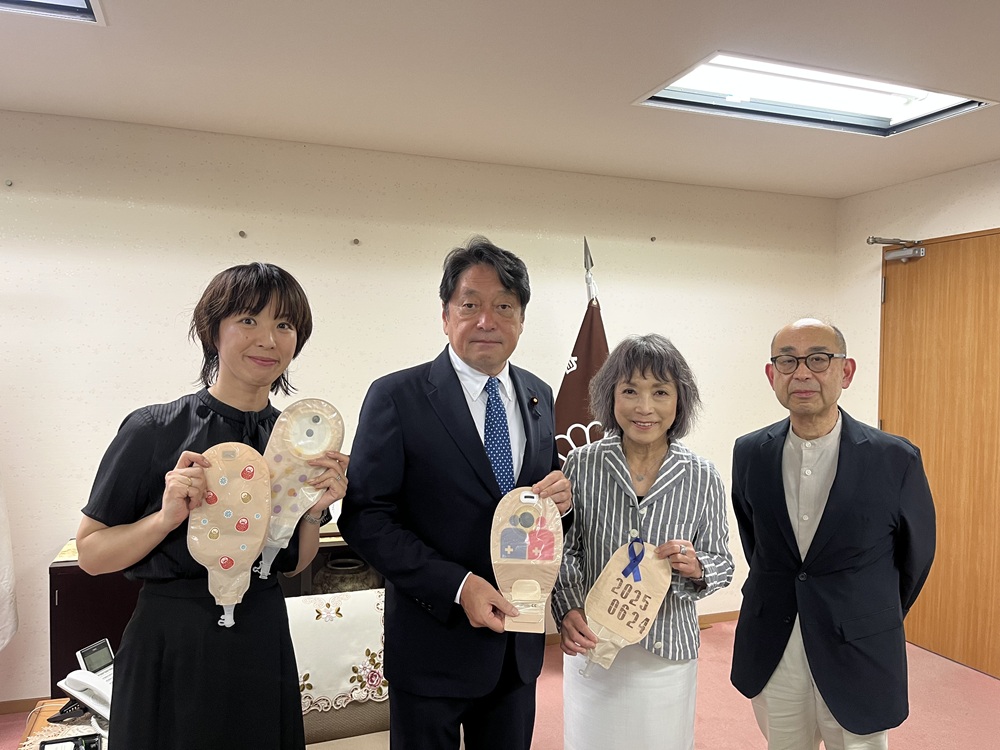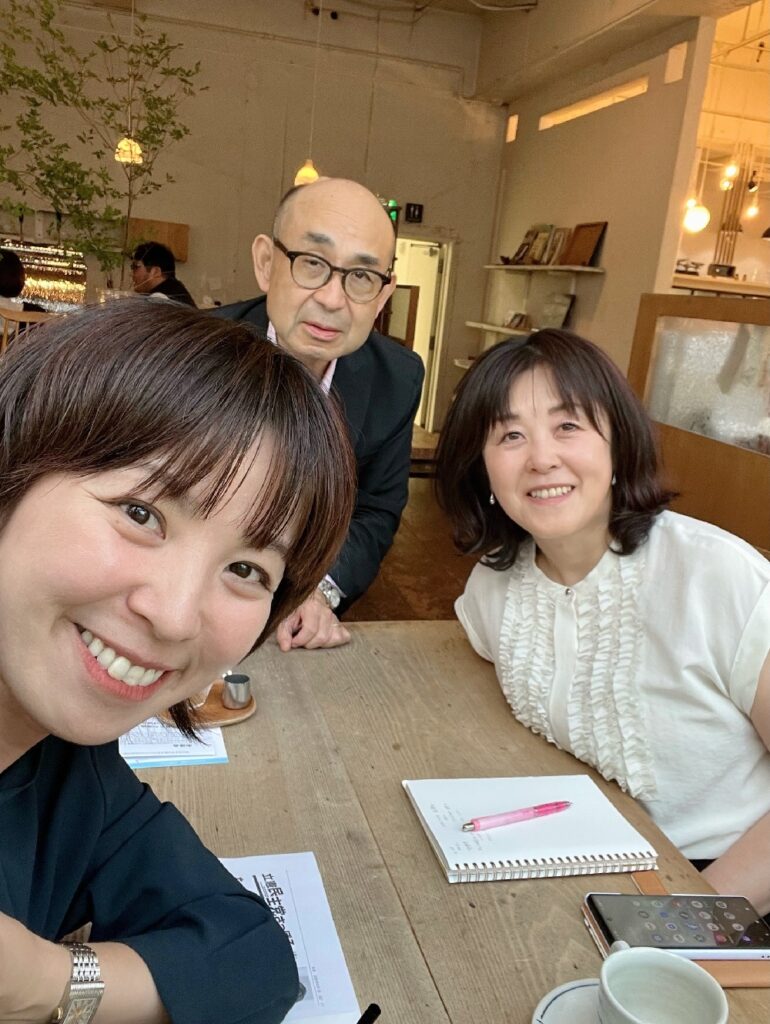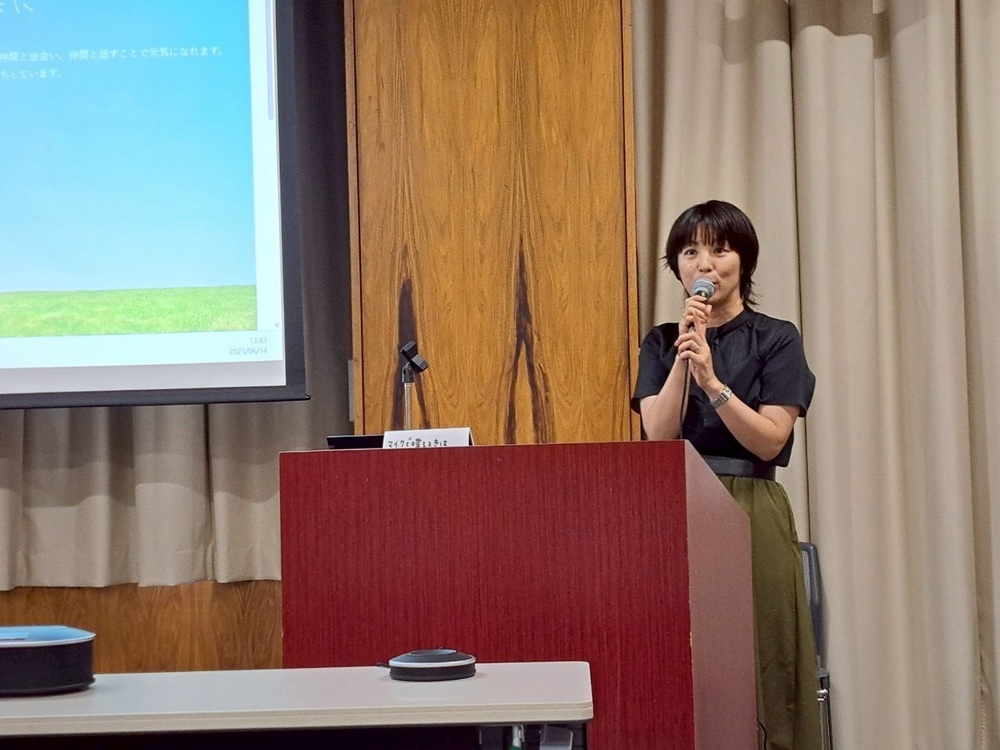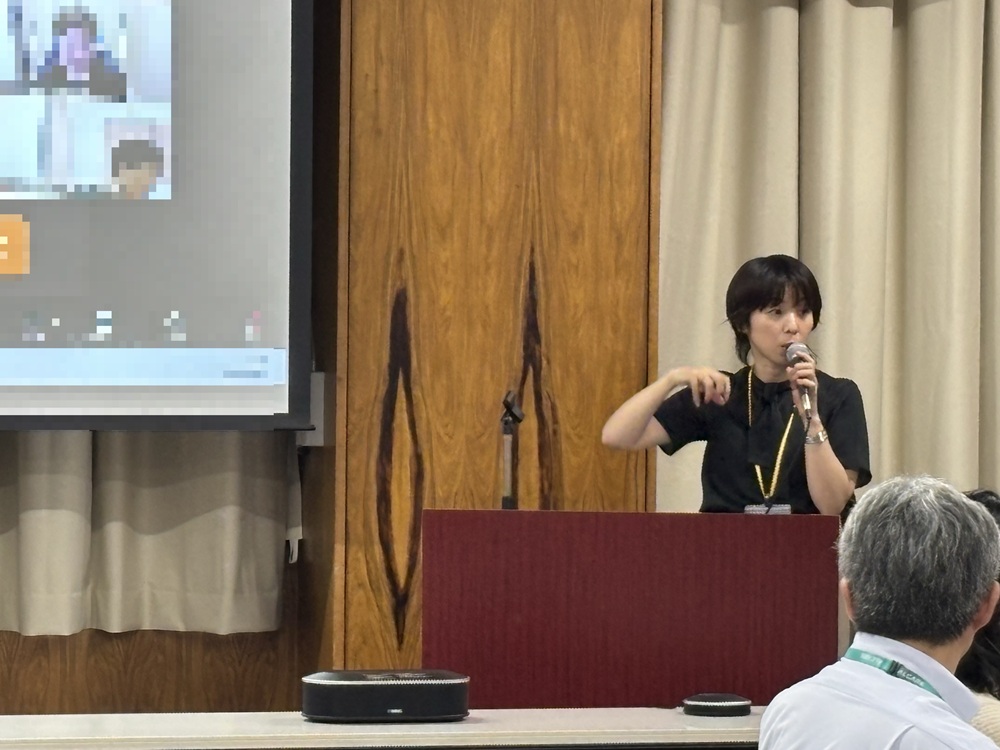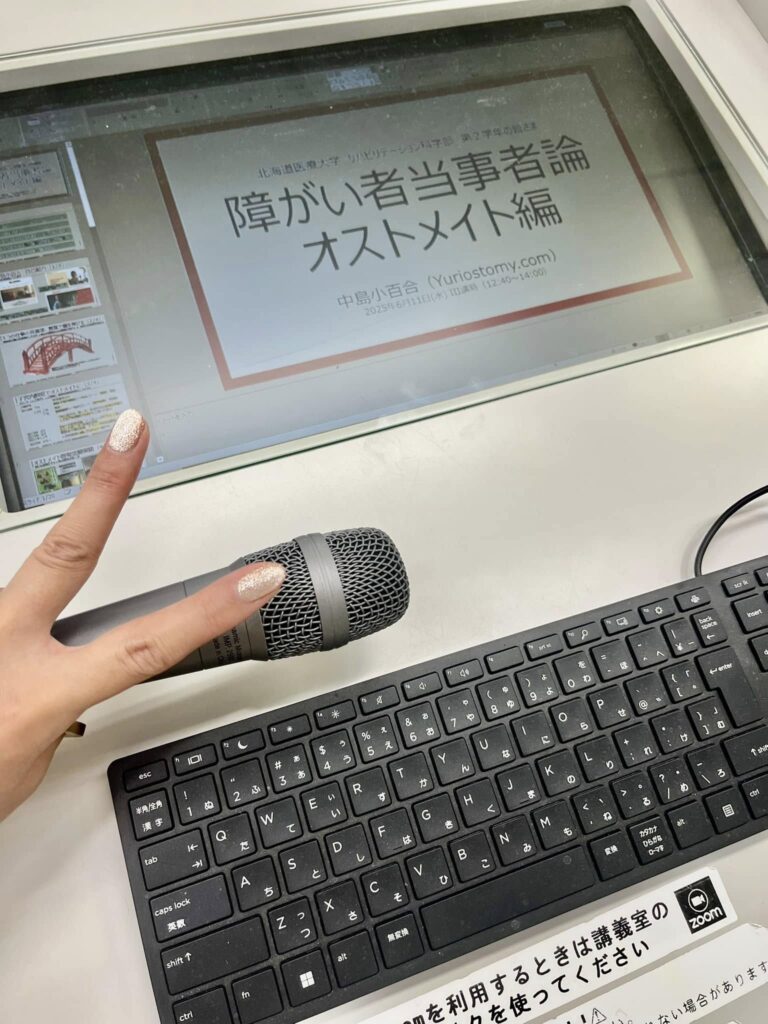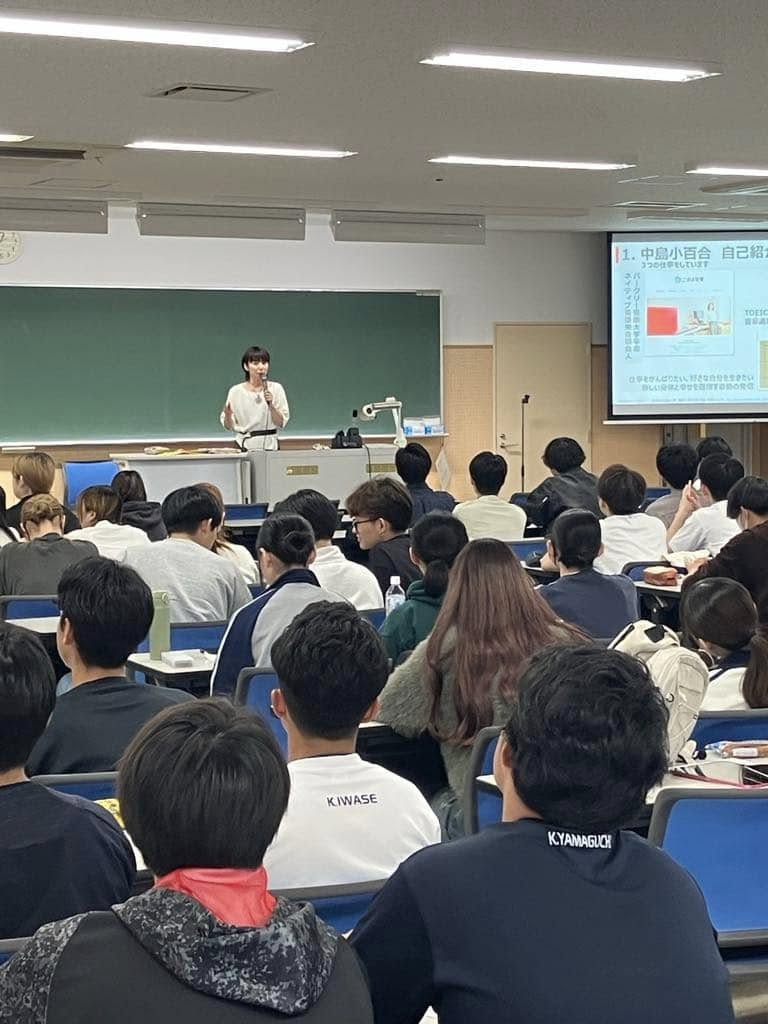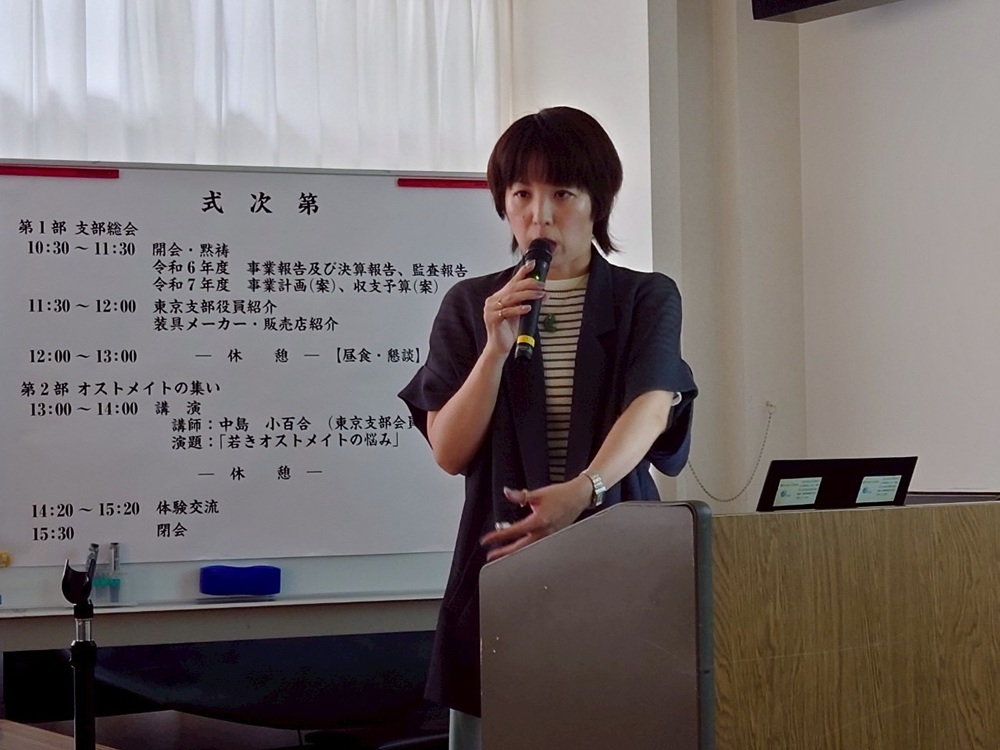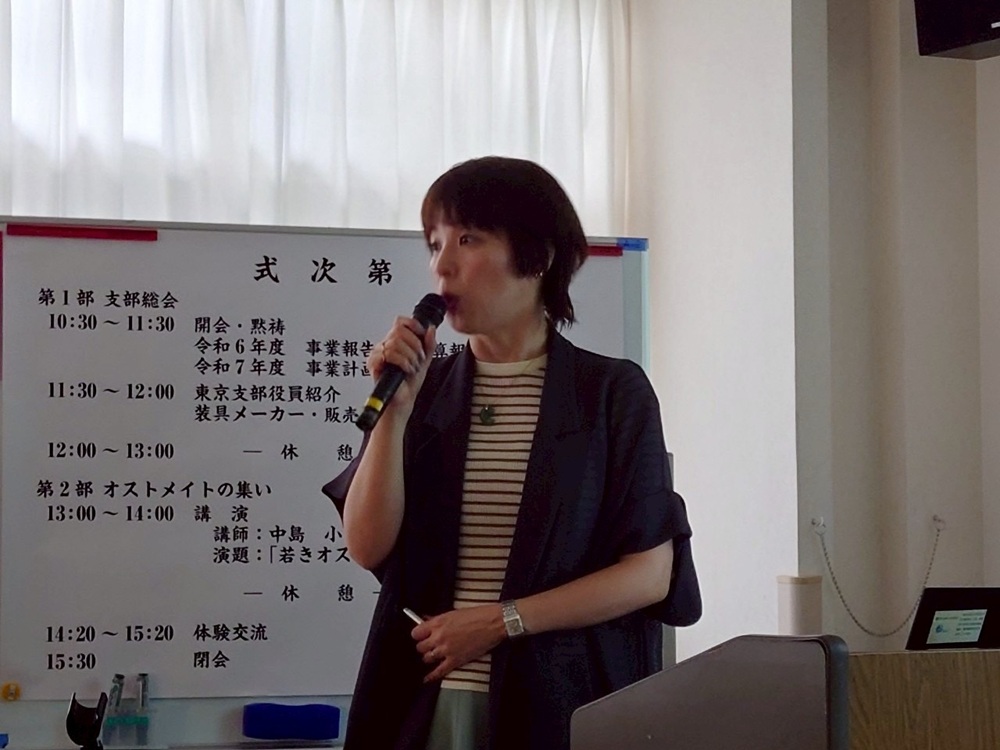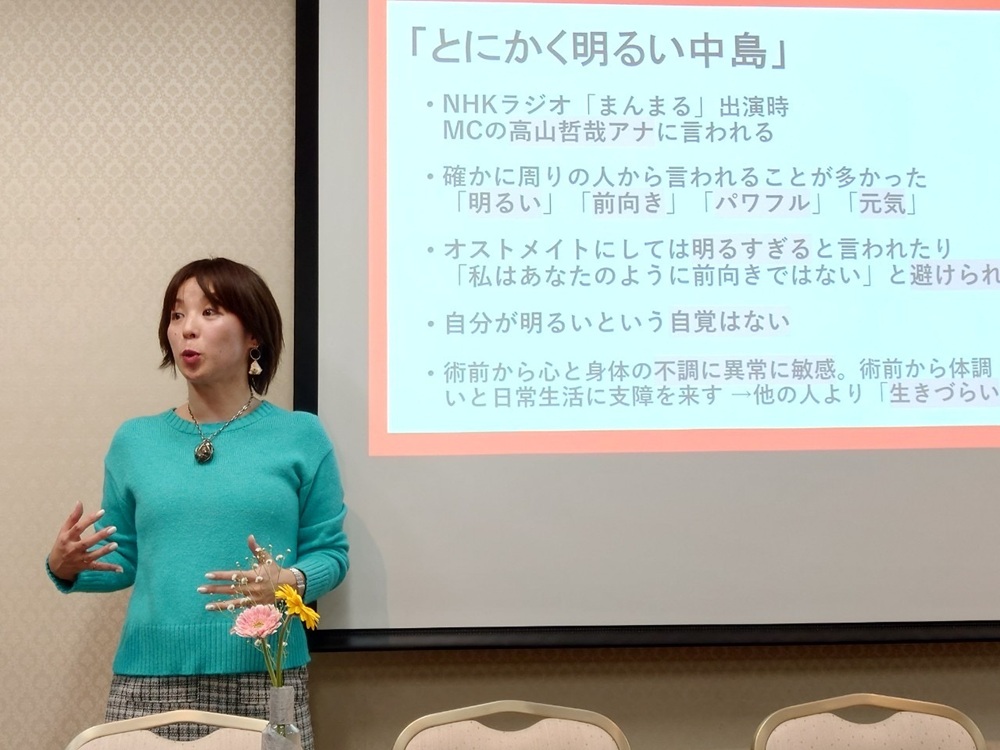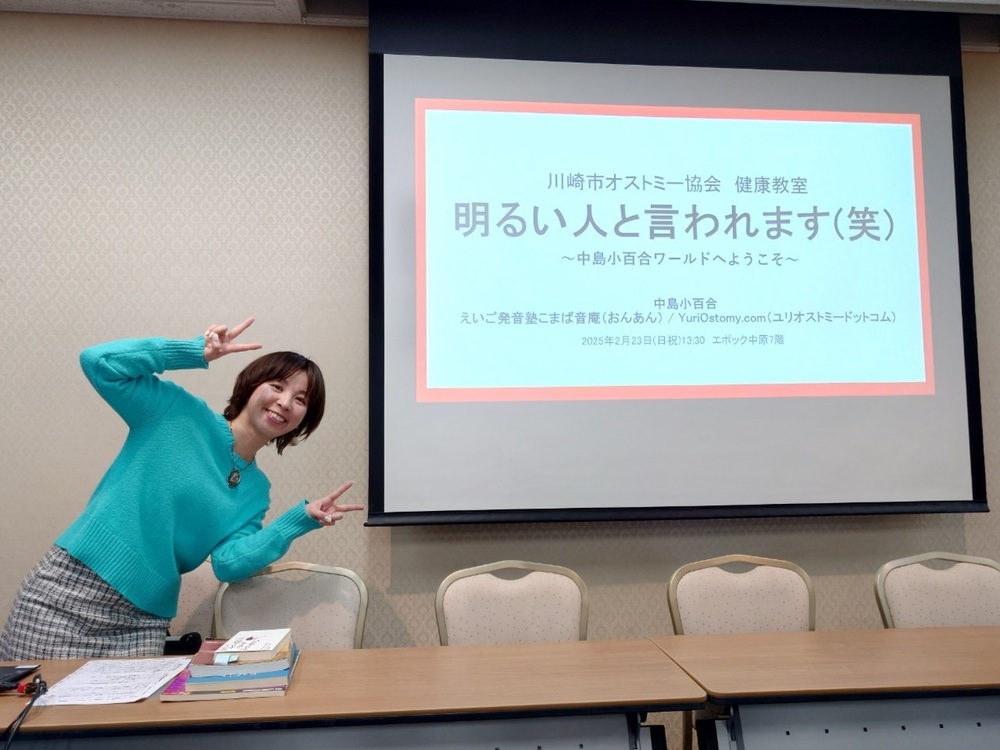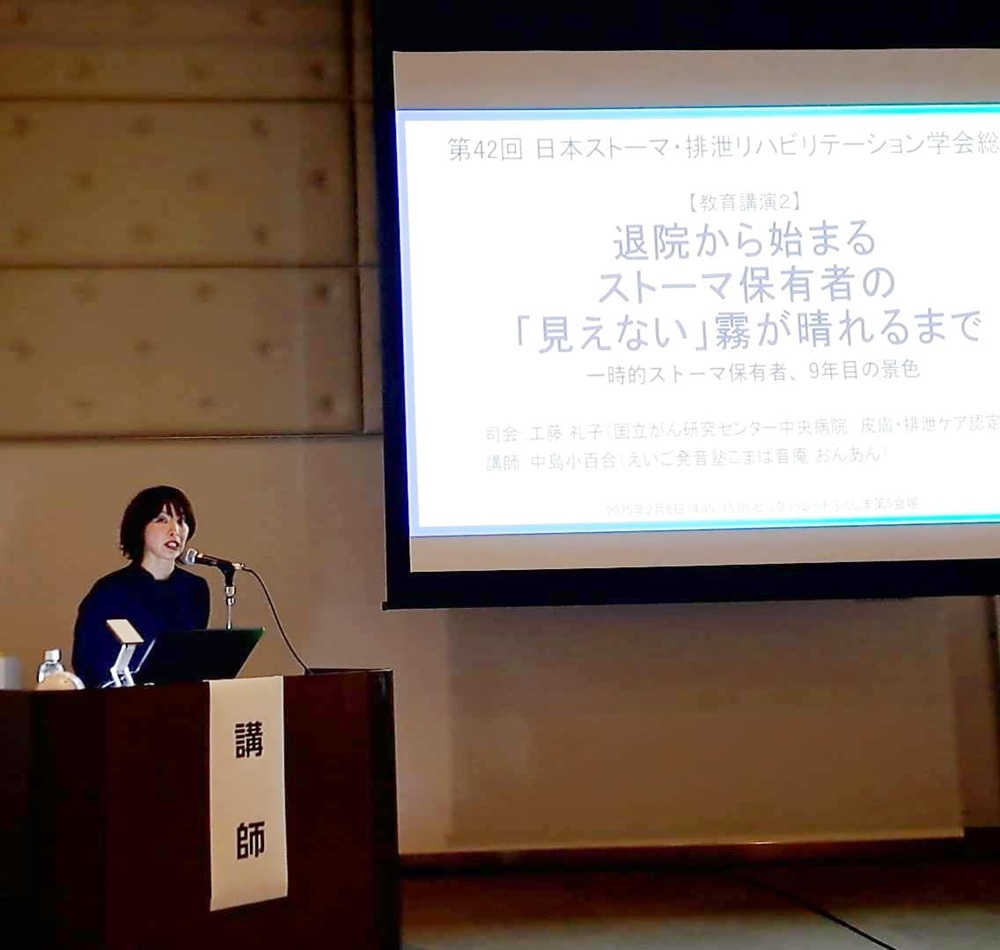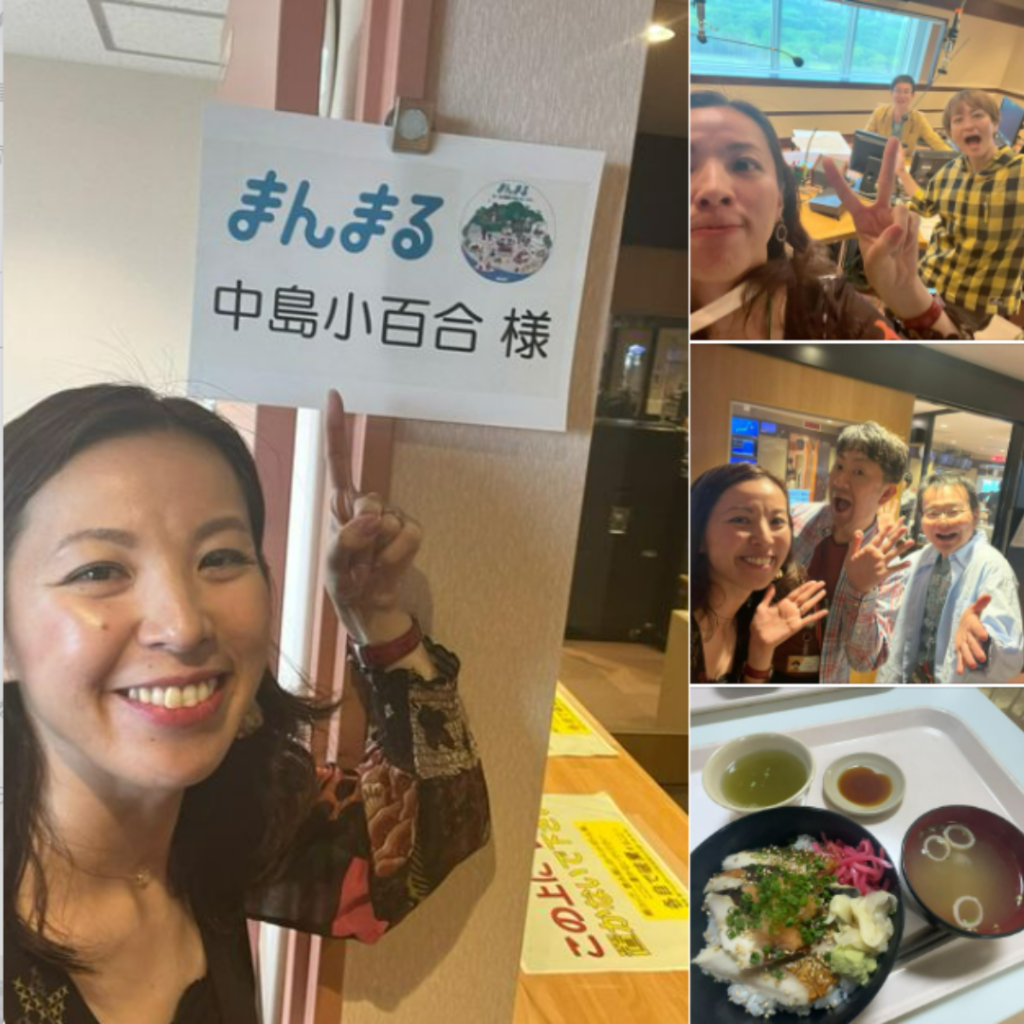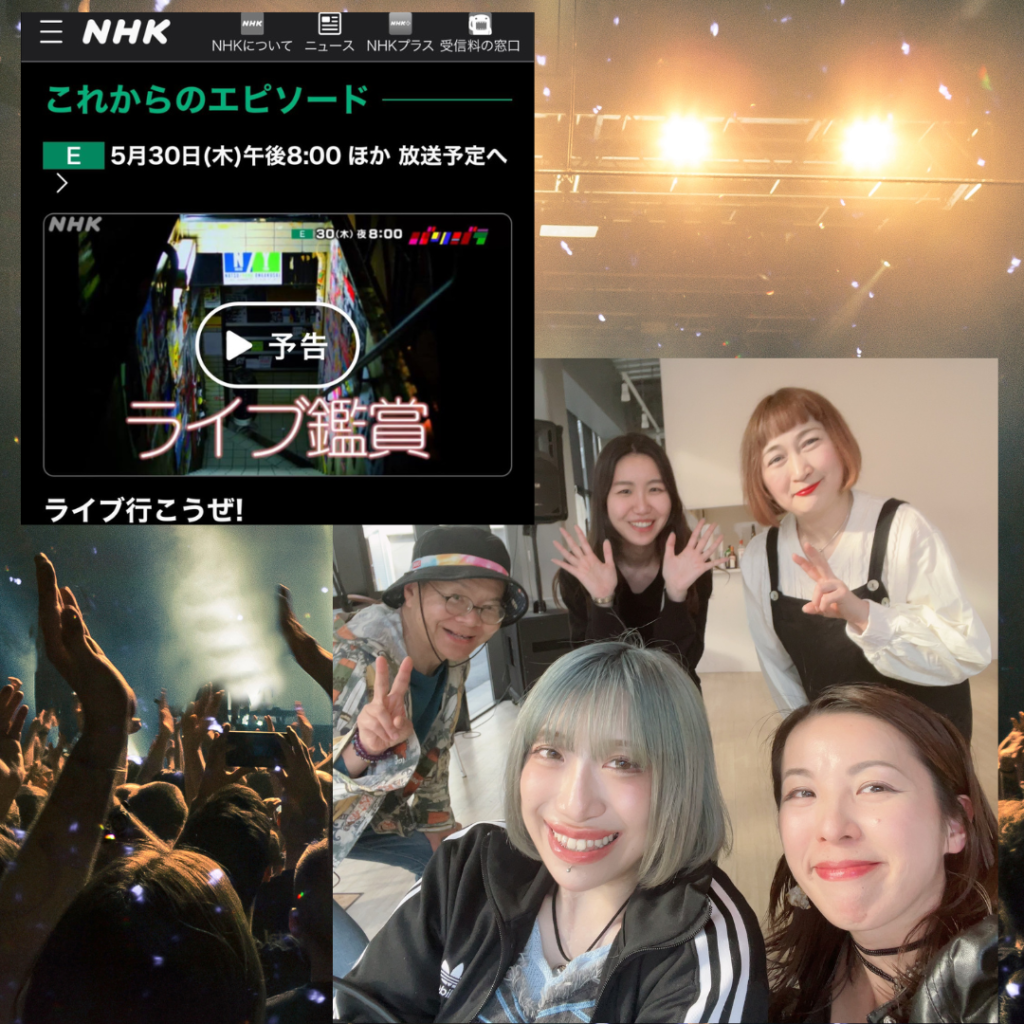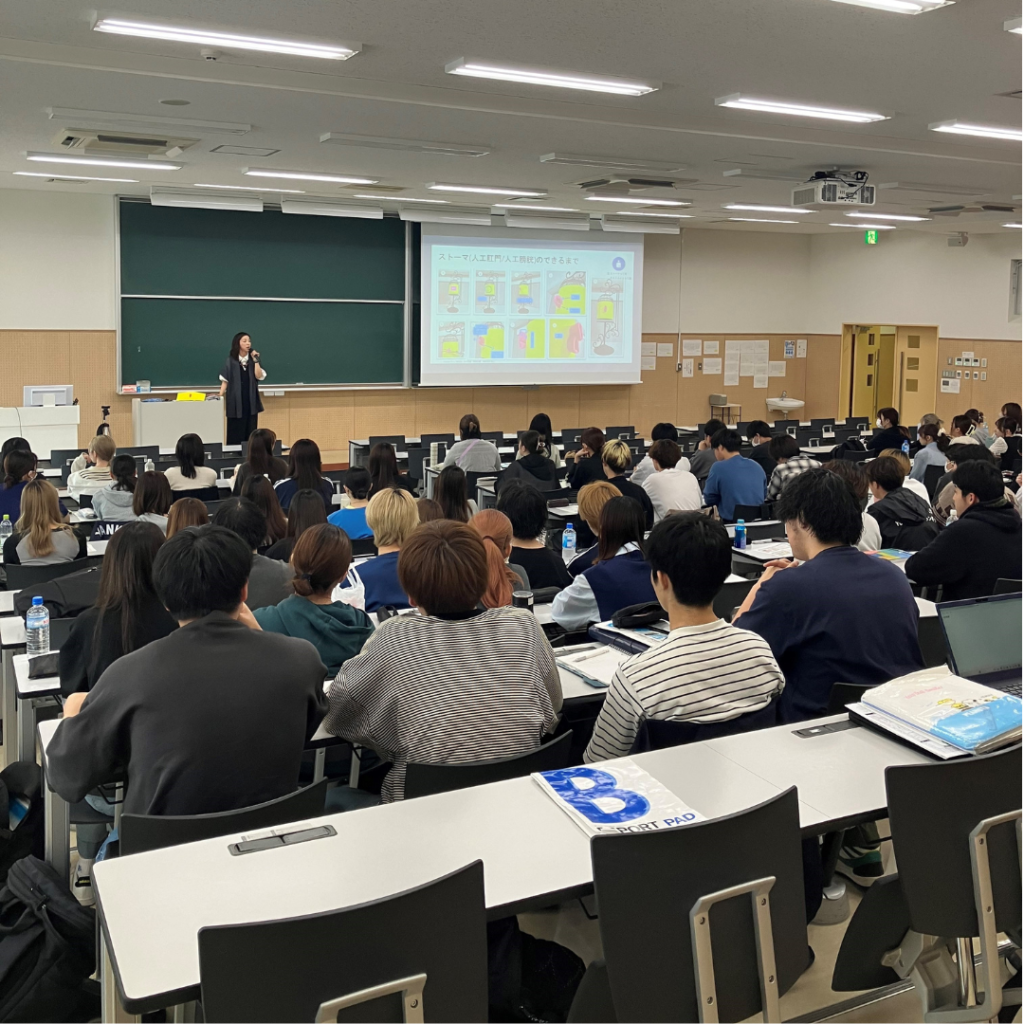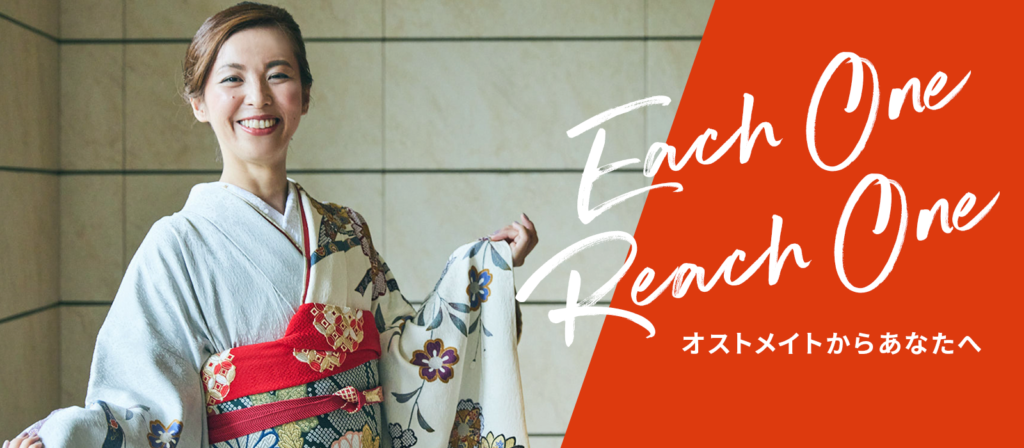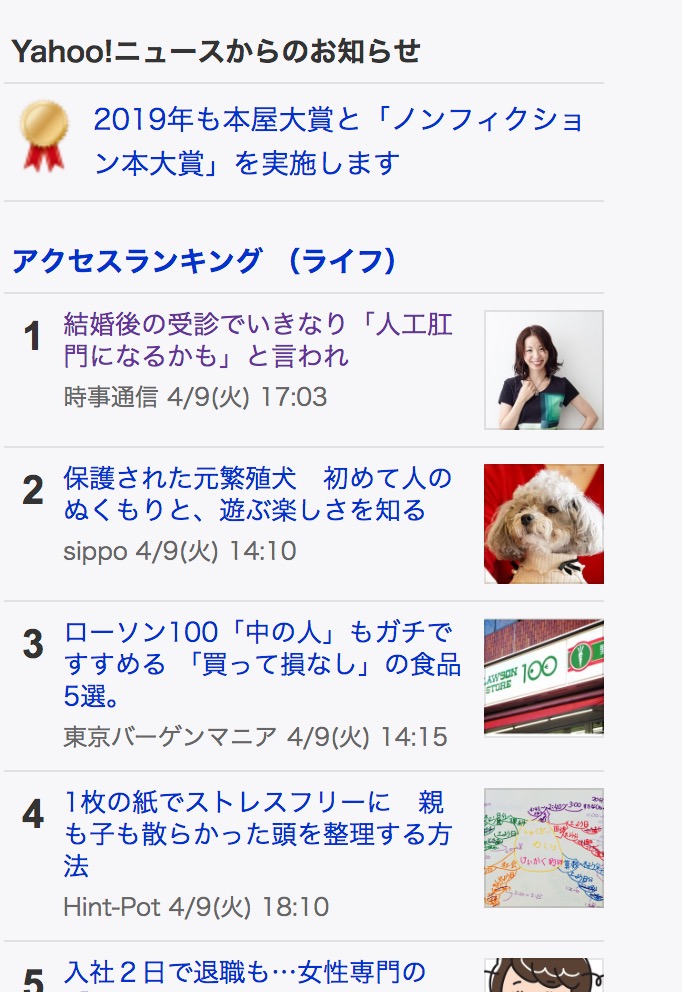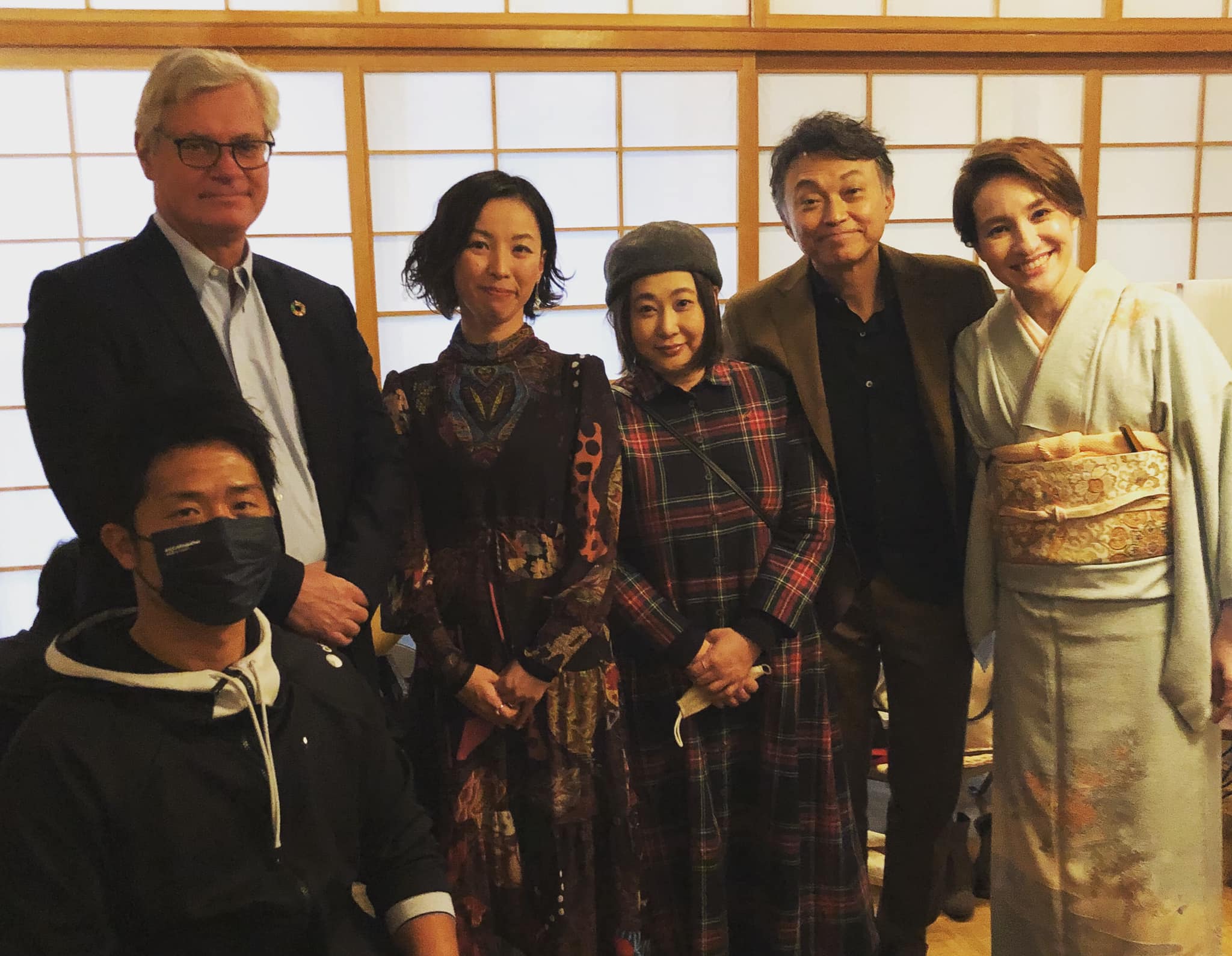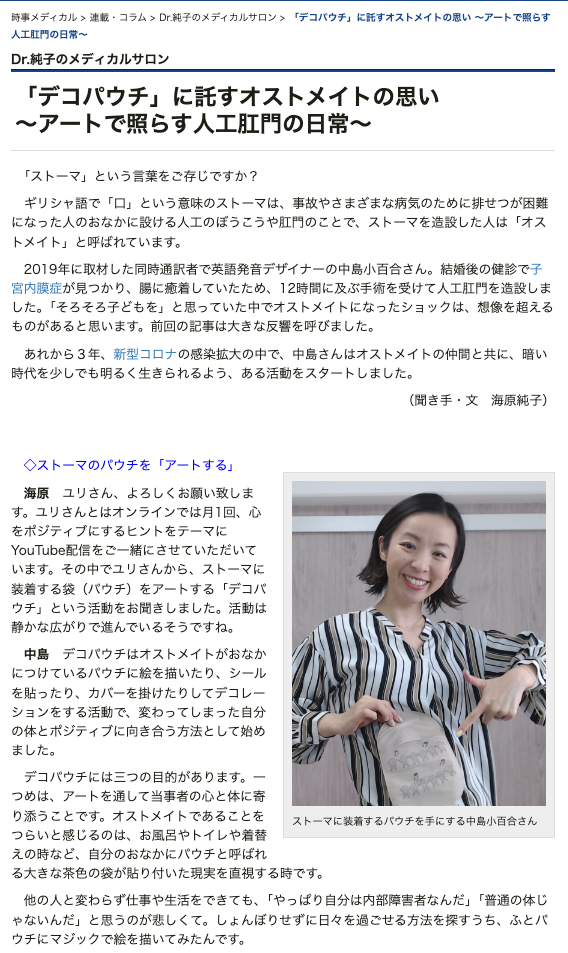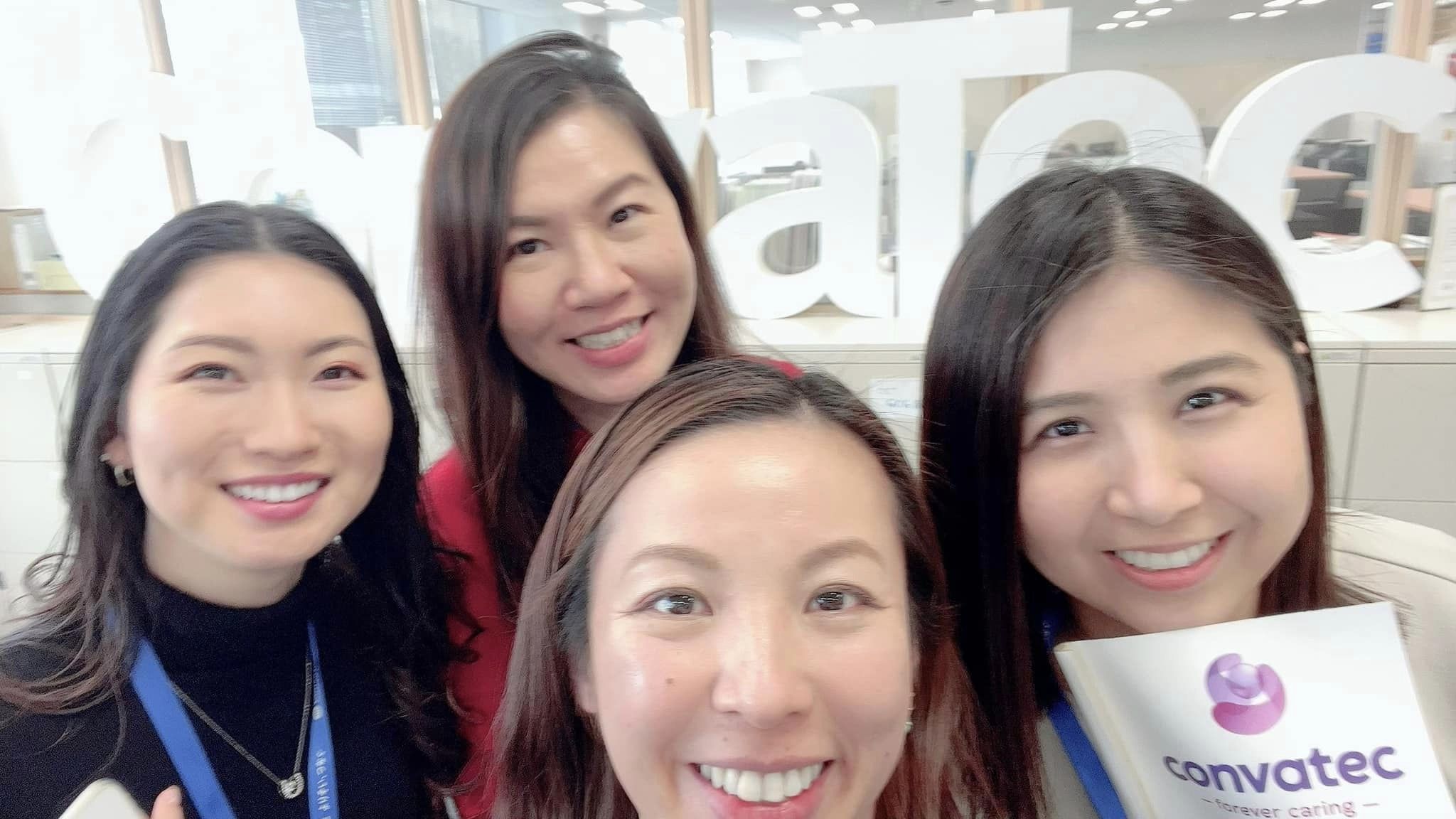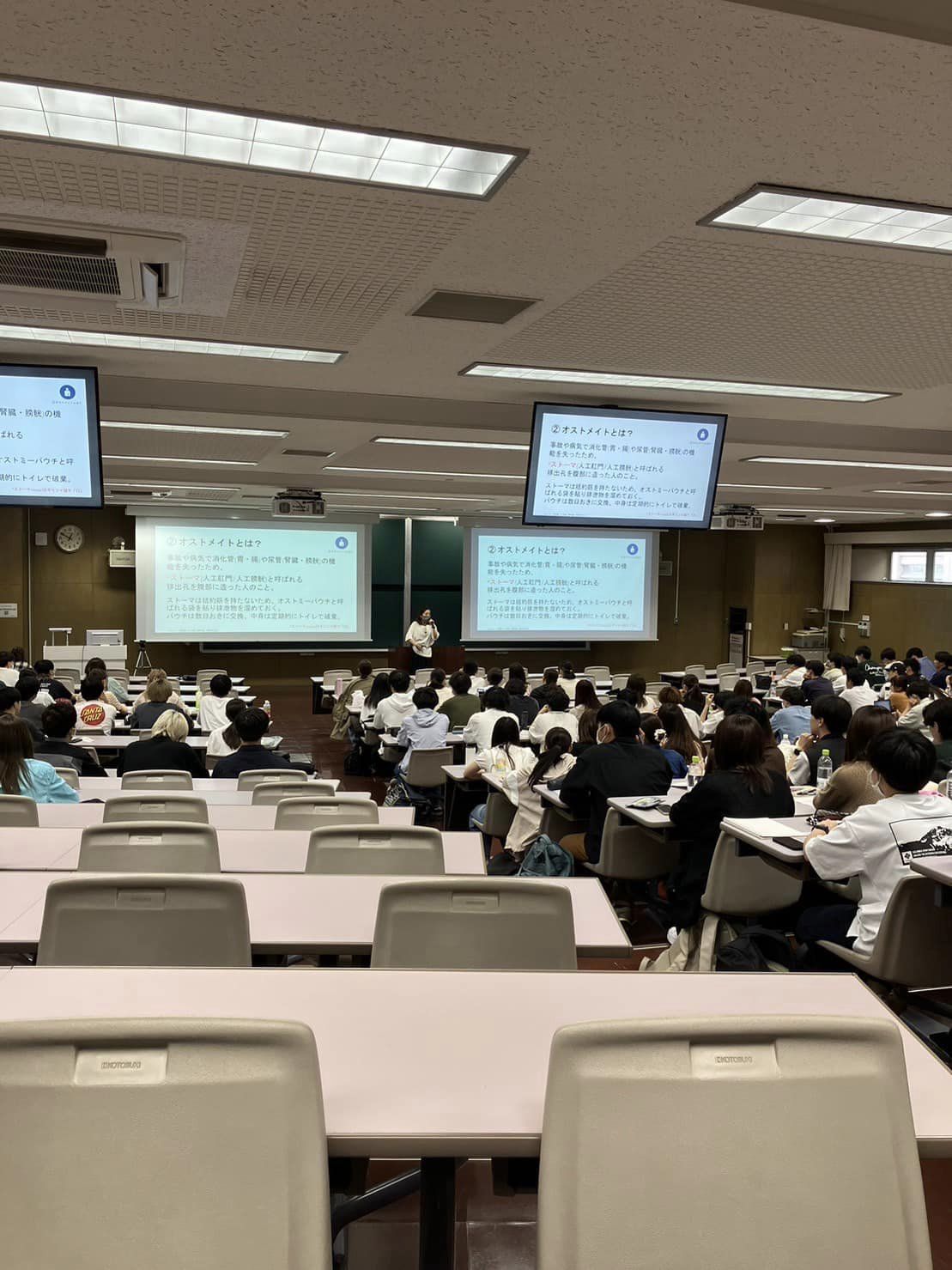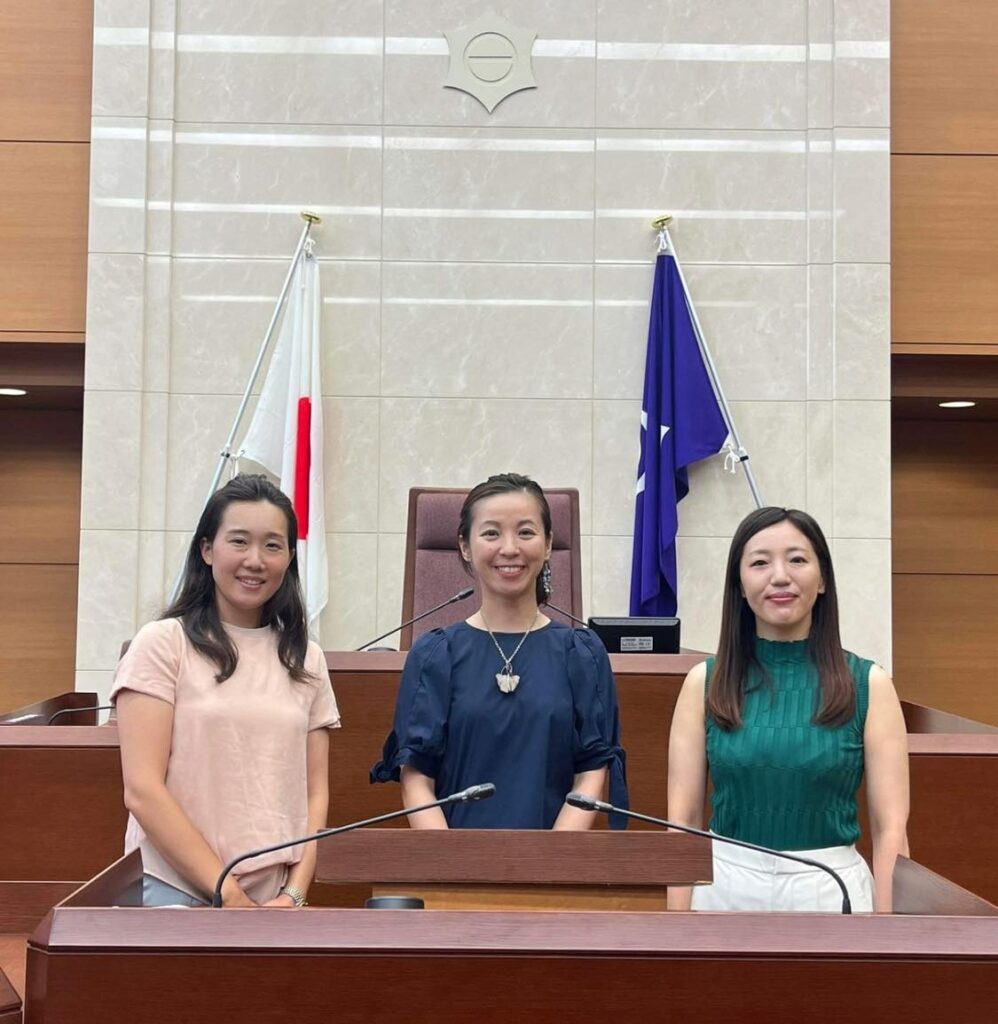中島小百合プロフィール
Sayuri “Yuri” Nakajima

人生いろいろ起きるもの ~ Life’s a messy business.
こんにちは、中島小百合といいます。仲の良い方は「ユリ」と呼んでくれます。
英語発音の指導と、音楽関係の通訳/翻訳 の仕事をしています。
2016年、結婚して間もなく腸管子宮内膜症と診断され、ストーマ(人工肛門)を造設しました。
オストミーパウチと呼ばれる袋を、24時間おなかに貼って生活しています。
幸せなはずの日々は、人工肛門という残念な名前の処置により一変しました。
トイレやお風呂のたびに大きな茶色の袋が張り付いたグロテスクな自分の姿と向き合うことができず、退院後も毎日泣いていました。ストーマの管理に慣れるまでは「パウチの中身が漏れてしまったらどうしよう」と不安で、気分転換どころか外出も難しい状態でした。
手術直後はひどい状態の私でしたが、現在は術前よりアクティブに、新しい身体での日々を楽しんでいます。
前を向いた 最初のきっかけ
オストメイト(人工肛門・人工膀胱保有者)な日々を前向きにしてくれた最初のきっかけは、海外のオストメイト当事者グループです。
2万5千人以上のメンバーが1日100件近く投稿するようなオストメイト当事者のオンラインコミュニティで、異なる世代や職業の方の写真やエピソードを毎日英語で読むうちに、自分の「ふつう」がポジティブに書き換えられていくのを感じました。
障害のあるなしに関わらず、日本と海外ではボディイメージ(自分の身体をどう捉えているか)が大きく違います。
英語話者の方のほうが 「どんな体型でも、身体に傷や障害があっても、ありのままの自分を大切にする」という感覚が強く、さまざまなメッセージが心に沁みました。
ー病気や事故で身体や心が変わったことを受けいれて、新しい自分の身体と心のまま心地よく生きたい。
ー過去と今を比べて嘆いても時間は戻らないので、今の自分でプライベートも仕事も充実させたい。
ーやりたいことを見つけたら、「どうしたらそれが叶うか」を考えて、少しずつでも近づきたい。
ーできないことがあれば、簡単にあきらめる前に、助けを求める勇気も出したい。
当たり前に聞こえるかもしれませんが、この新しい「ふつう」に向かって最初の1歩を踏み出せたのは海外の仲間たちのおかげです。
現在はSNSや日本オストミー協会などの当事者支援団体を通じて、全国に住むオストメイトの仲間たちとも楽しく交流しています。
仕事である英語のスキルを活かし、さまざまな価値感や背景を持った方との対話を大事にしながら、誰もが自分なりのあたらしい「ふつう」を生きられるには何が必要なのかを考え実践していきます。
当事者を支える「表現」のちから
ネガティブな気持ちに飲み込まれず、心と身体を健やかに保つうえでもう1つ役に立ったのは、モヤモヤや感情を身体の外に出す(表現する)ことでした。
学生時代に音楽(歌)を専門的に勉強したこともあり、感情を外に出すためのツールとして「表現」の力を借りてきました。
表現というと音楽や絵画などをイメージしますが、表現の手段は他にもたくさんあります。日記を書いたり、SNSに写真や文字を投稿したり、友達とのお喋りで悩みを打ち明けたり、専門家とカウンセリングをしてみたり… どんな方法でも、「感情を外に出す」という意味での表現は、心の整理を手伝ってくれます。
自分が何で落ち込んでいるのか分からず、家族や友人の心配すらストレスに感じた時でも、ブログやSNSに文字を綴ると少しだけ気持ちが落ち着きました。
おなかに貼っているパウチにシールを貼ったり絵を描いたりすることで、当事者の術後の身体との向き合いを応援する活動には「デコパウチ」という名前をつけました。デコパウチも、アートの力を借りて言葉にならない感情を外に出し、当事者の心に寄り添う活動です。
心の専門家とのカウンセリングが一般的ではない日本では特に、文字やアートの力を借りて自分自身の心と身体をいたわることが当事者のQOLを向上させ、その後の治療や生活を前向きに進めるきっかけをくれると信じています。
オストメイトからあなたへ ~Each One Reach One
このサイトは、病気をきっかけに新しい「ふつう」を手に入れたオストメイトの日々を紹介します。
オストメイトの方も、オストメイトではない方も。何かのきっかけで今の「ふつう」が崩れてしまったとき、そこから新しい1歩を踏み出すきっかけをこのサイトに見つけてもらえたら。
こんなに嬉しいことはありません。
あなたの「いま」の心と身体で、あなたなりの心地よい今日を過ごせますように。
私も「いま」の心と身体で、自分なりの心地よい今日を過ごします^^
SNS
- Facebook https://www.facebook.com/sayuri.nakajima.onan
- Instagram https://www.instagram.com/sayuri_onan/
- X https://twitter.com/sayuri_onan
- note https://note.com/sayuri_onan
- YouTube ユリの英語発音チャンネル
Life’s a messy business.
Hi, I’m Sayuri Nakajima, people call me Yuri. Born and raised in Japan, studied music in Boston, MA, and became a freelance translator and an English pronunciation teacher for Japanese musicians, actors, and business executives back in Tokyo.
I was diagnosed with intestinal endometriosis shortly after my marriage, and a stoma was installed in July 2016. A stoma is a surgically created opening on the surface of the abdomen. My digestive system makes a shortcut and ends at my stoma, which functions as an outlet for all I eat. Now I live with a colostomy bag stuck to my tummy 24/7.
My body image was shattered into pieces after the surgery, initially because of the fact that a stoma is called an “artificial anus” in Japanese. The term stoma is also used in Japan, but the majority of people don’t understand what it is so I always end up referring to what is installed on my belly with its brutal Japanese designation.
The stigma around having a stoma made me cry every time I had to face my “artificial anus” with a big brown bag on my tummy at showers and bathrooms long after I was discharged. It took months for me to feel fully confident to even just go out, until I became comfortable enough with my stoma care routine.
Life with a stoma started off as a mess in my case, but thanks to various support systems available online and offline, I can proudly say that I’m now living to the fullest (in my own way) with the body I have now.
The first step out of the darkness
What empowered me the first and foremost on my ostomy journey, were the English-speaking online ostomy communities.
There is one such group with 25k+ members who post 100+ times daily, and the more I scroll through their pictures and stories shared in the community, the more positively my brain’s default setting as a poorly patient was overwritten. People were independent but caring for other members, battling with their symptoms and issues every day, and they weren’t afraid of being vulnerable when sharing their raw emotions.
It seems body image issues are more prominent in Asian countries, with or without disabilities. Studying abroad helped me unlearn how people see me, and relearn how to embrace who I am, no matter how different I might look and feel from the social norm. I was studying singing at a college where people can be very harsh on your looks, but it was somehow much easier, even liberating to be an aspiring singer in Boston than a student studying ancient Japanese philosophy in Tokyo.
English speaking ostomy communities became my primary source of solace, and it helped me find my Japanese friends with ostomy, too.
I like taking time to work on;
mourning what is lost properly
embracing the body and mind I have right now
doing my best but knowing when to pause and rest
setting goals and making them come true
asking for help before giving up
It may sound ordinary, but these words became my mantras to get me through the day. Thanks to like-bodied people all over the world, I was able to take a first step forward out of the darkness.
I found domestic ostomy communities including Japan Ostomy Association, Bouquet (association of young women with ostomy), and other groups organized by supply manufacturers, but I still see a lot of Japanese people with ostomy struggling.
Express yourself in any forms, because it does help you feel better
Another thing that helped me stay out of a negativity spiral during my recovery, was to find a means to express/ let out your feelings. Feelings that might not even have much shape, only a sense of oozing uneasiness.
“Expressing yourself” sounds fancy and artsy, but it could be blogging, vlogging, taking pictures, singing, dancing, reading, wearing kimono, talking with close friends, going to therapy – the list goes on and on.
I have always been a firm believer in the power of expressing ourselves, long before the surgery. My ammunition was: writing songs, blogging, and talking with professionals. They helped me make sense of all the chaotic emotions bubbling out of control.
Even when I felt too stressed to answer constant texts asking how I am doing, writing out how I am really doing on the back of scrap paper helped me vent. Some of these outbusts were posted online, but didn’t have to be seen or read.
I also had fun doodling on my colostomy bags, and I named those decorated ostomy pouches “Deco-pouch”. It became my little DIY expressive therapy project, and I found out that wearing those deco-pouches genuinly boosted my confidence, too.
Since therapy is not recognized as a conventional mental healthcare method in Japan, utilizing anything that could help sort out my emotions was a crucial aspect of my journey.
I am hopeful that other people with ostomy find expressing themselves beneficial to let go of the negativity and contribute something positive to their wellbeing.
One ostomy bag at a time ~ Each One Reach One
On this website, I’ll be sharing stories of a bilingual girl with an ostomy who grew out of being a patient, learning from various cultures (including my own), marching forward for a fuller, more exciting life through conversations with many people with or witout bags.
If your world had to turn upside down (and I am praying very hard none of it happens to you), you might find what I do here helpful. Because my world did turn upside down, and I found a way around it.
Let’s have a good day today, with the body and mind you have right now.
I will do the same with the body and mind I have right now.
Hopefully our paths cross one day.
Social media handles;
- Facebook https://www.facebook.com/sayuri.nakajima.onan
- Instagram https://www.instagram.com/sayuri_onan/
- X https://twitter.com/sayuri_onan
- note https://note.com/sayuri_onan
- YouTube English, Music and Everything in Between
イベントや活動についてお問い合わせはこちらから
Contact me here for inquiries


